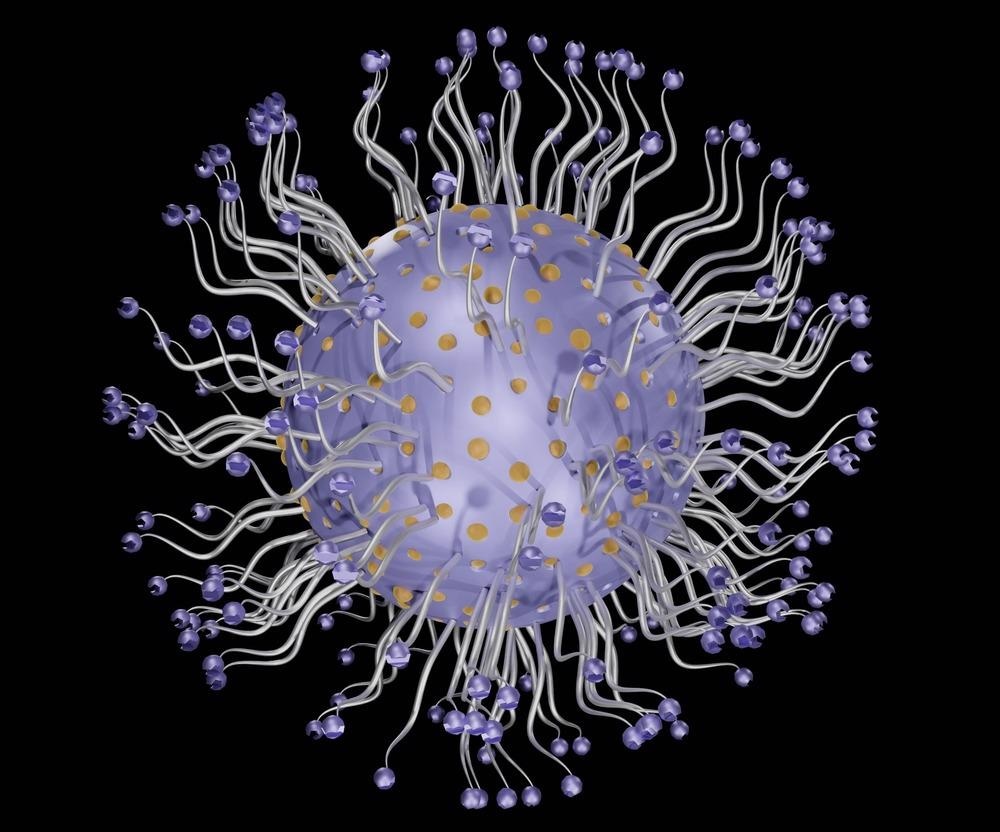 By Surbhi JainReviewed by Susha Cheriyedath, M.Sc.Jun 8 2022
By Surbhi JainReviewed by Susha Cheriyedath, M.Sc.Jun 8 2022In an article recently published in the journal Biomaterials, researchers discussed the development of hydrogel microcapsules containing modified microbes for long-term protein drug synthesis and release.

Study: Hydrogel microcapsules containing engineered bacteria for sustained production and release of protein drugs. Image Credit: Love Employee/Shutterstock.com
Background
Subcutaneous administration of sustained-release formulations is a common route of delivery. Because protein medicines are easily degraded and inactivated, subcutaneous sustained-release drug administration presents more challenges as well as opportunities.
As a result, a variety of methodologies for developing sustained-release protein medicines have been proposed. Traditional techniques, on the other hand, can only transport a limited amount of protein medicines at a time, resulting in insufficient durability. Long-acting medication design will benefit from an approach that can continuously release fresh protein medicines in situ without exhausting the pharmaceuticals.
Engineered microbes have recently opened up new medicinal and diagnostic possibilities. Because of its safety and drug release properties, chitosan (CS) is a popular material for micro and nano vehicles. Many gene modules have previously been produced for in vivo applications. The lytic release circuit is ideal for releasing protein medicines in a stable manner because it surpasses the limit of spontaneous secretion efficiency. On this foundation, a universal live microcapsule harboring modified bacteria for the long-term release of protein medicines can be developed.
About the Study
In this study, the authors discussed the development of microcapsules based on modified microbes for the long-term release of protein medicines. Engineered bacteria were encapsulated in microcapsules for subcutaneous injection, and a production-lysis circuit was used to ensure consistent protein production and release. Engineered bacterium microcapsules were shown to release Exendin-4 smoothly for two weeks in diabetic rats, lowering blood glucose levels.
The team presented a design for hydrogel microcapsules containing modified bacteria that could generate and release protein medicines over time. A production-lysis circuit was built into the E. coli, which was genetically altered and encased in CS microspheres, and dubbed E@CS. A rat model of diabetes was created to investigate the function and duration of this technique. In addition, a subcutaneous tumor model on mice was used to demonstrate the delivery capability of nanoparticles.
The researchers combined the engineered bacterial microcomponents (BMC) with immunodominant peptide SIINFEKL from the model antigen ovalbumin (OVA), which resulted in BMC-OVA, a self-assembled protein nano-vaccine. Further, an optogenetic clearance circuit was devised to address the strategy's potential long-term biocompatibility and biosafety issues.
Observations
Flow cytometry assays using GFP as a reporter revealed that the EL222 optogenetic system had a 9.4-fold change under 488 nm blue light control. The strain harboring pEL222 and pBLind-Kill was reduced to 1/2000 of its original number in Luria-Bertani (LB) culture after 2 hours of blue light exposure. In CS capsules, the level of E. coli was around CFU=5 x 107. The Ex-4 release reached a peak after about 1 hour, and around 70% of encapsulated Ex-4 could be released after 8 hours; however, BMC-OVA release was slower than Ex-4, with about 60% of encapsulated BMC-OVA liberated after eight hours.
Engineered bacterial microcapsules stimulated particular immunity in mice and prevented tumors by releasing subunit vaccines with bacterial micro-components as carriers. The modified bacterium microcapsules had the capacity to release protein therapeutics for a long time and had a wide range of medication sizes. E. coli could be engineered to release peptides or nanoscale protein particles based on medical demands. Exendin-4 (Ex-4) could increase insulin secretion and blood sugar management by regulating its production and release. E@CS's BMC-OVA was able to trigger specific immunity against B16-OVA, a tumor cell.
For at least two weeks, the E@CS were found to constantly generate and release Ex-4 and reduce blood glucose. The E@CS were also modified to generate and deliver the tumor vaccine BMC-OVA in another application. BMC-OVA was supplied to lymph nodes after two weeks of sustained release from BMCOVA-lysis E@CS. The results showed that following immunization, DCs, and CD8+ T cells were activated, and the tumor progressed slowly.
Conclusions
In conclusion, this study elucidated the development of E@CS, a system made up of microcapsules containing modified bacteria, for the release of long-lasting protein therapeutics. The E@CS was designed to synthesize peptide Ex-4 for long-term diabetic administration.
The authors believe that new technologies will aid in the clinical transformation of engineered bacteria, such as optimizing the chassis of engineered bacteria, labeling protein products with unnatural amino acids, and developing more sensitive product detection methods to avoid the negative effects of long-term and frequent blood sampling on animals and patients. They believe that this work will broaden the applicability of microbial therapy by developing a procedure for the subcutaneous delivery of modified bacteria. They also mentioned that the proposed method could allow for the long-term synthesis of protein medicines with only one administration.
With the advancement of synthetic biology, the team anticipates that the proposed technique will inspire the development of new medicines in the future.
More from AZoM: How are PAT Techniques Used for Real-Time Particle Analysis?
Disclaimer: The views expressed here are those of the author expressed in their private capacity and do not necessarily represent the views of AZoM.com Limited T/A AZoNetwork the owner and operator of this website. This disclaimer forms part of the Terms and conditions of use of this website.
Source:
Han, C., Zhang, X., Pang, G., et al. Hydrogel microcapsules containing engineered bacteria for sustained production and release of protein drugs. Biomaterials 121619 (2022). https://www.sciencedirect.com/science/article/abs/pii/S0142961222002599